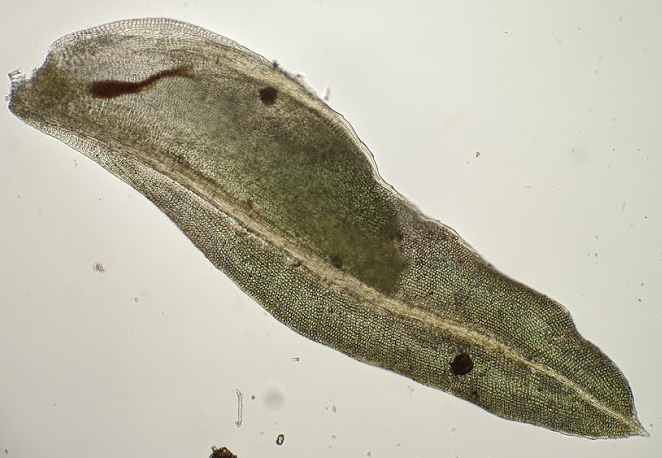Fissidens megalotis
Schimp. ex Müll.Hal.Asexual propagules absent. Mats on soil. Stems 4–8 mm long, simple or occasionally branched, curled downwards when dry, central strand present, with rhizoids restricted to base. Leaves broadly oblong-lanceolate, curled and contorted when dry, 1–1.5 mm long, perichaetial leaves longer, flat; costa percurrent to slightly excurrent; apex acute to acuminate, occasionally arcuate. Apical and dorsal laminae with entire margins except at apex where serrulate, with 1–2 rows of narrower elongate cells forming a sometimes indistinct border but absent near apex; cells away from margins ±isodiametric, rounded-hexagonal to pentagonal, 5–8 μm wide, smooth to obscurely bipapillose. Vaginant laminae 2/3–3/4 leaf length, open and gaping, with 1–4 (–8) rows of narrower elongate cells along margins forming a border, intramarginal near base before disappearing at base. Dioicous. Seta to c. 5 mm long, yellow to light brown. Capsule short-oblong, horizontal, curved; theca c. 1 mm long. Operculum rostrate from a conic base, c. 0.5. Peristome teeth bifid.
LoM, MuM, Wim, GleP, VVP, VRiv, RobP, MuF, GipP, WaP, Gold, CVU, GGr, DunT, NIS, EGL, EGU, WPro, HSF, OtR. Widespread throughout all of Victoria, including low rainfall areas of the north-west, in a wide variety of habitats. Also WA, SA, QLD, NSW, ACT and Tas. New Zealand, South Africa.
 Spinning
Spinning


